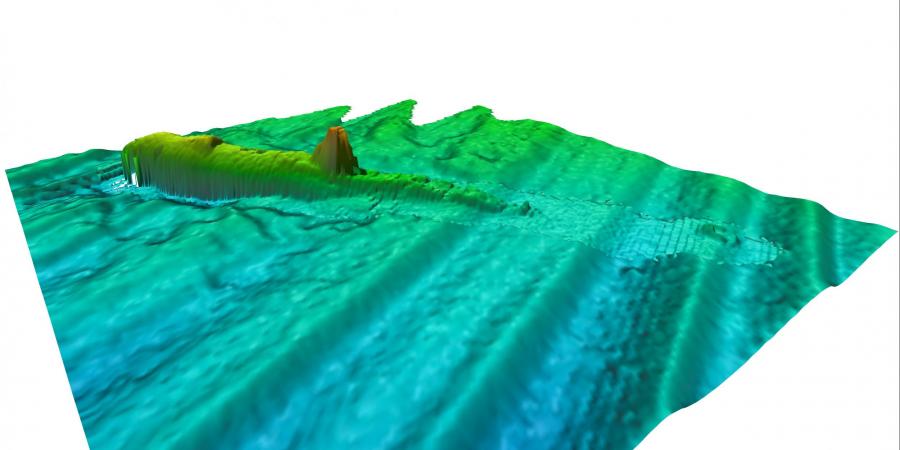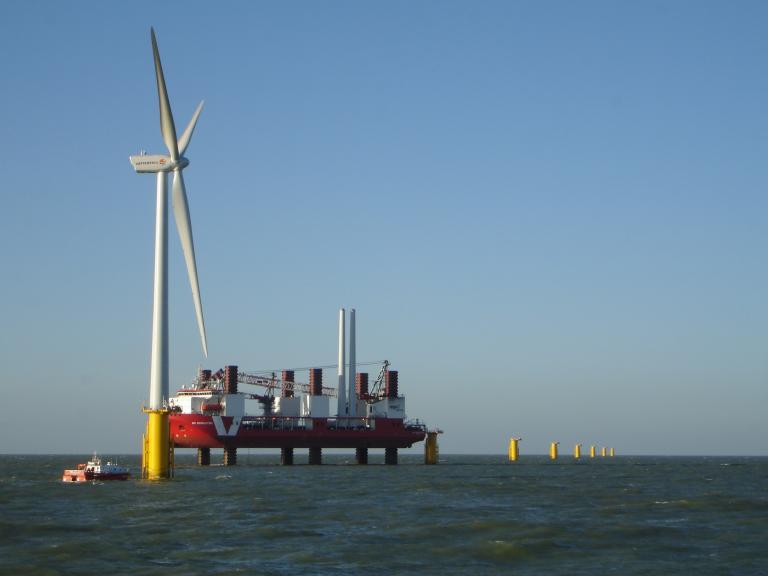When approaching the Round 4 Offshore Wind Plan-Level HRA, you'll know the value of a safe pair of hands to assess the potential impacts of your scheme.
Wessex Archaeology has been trusted to manage the historic environment by offshore developers for over 15 years, on over 70% of all UK Offshore schemes. We'll help smooth the process from start to finish, ensuring that you meet the legal requirements to progress smoothly with your scheme.
Here, we've put together some FAQs about managing the historic environment on your Round 4 offshore scheme.
What are my responsibilities as an offshore developer?
The historic environment is an important consideration on any offshore scheme.
As a developer you are legally obliged to consider the historic environment in accordance with relevant legislation, policy and industry standards and guidance documents, with specific reference to the relevant National Policy Statements (NPSs), the National Planning Policy Framework (NPPF) and the Marine Policy Statement.
What constitutes marine cultural heritage?
The UK has an extremely rich cultural heritage offshore and in our nearshore and intertidal zones.
This includes all remains that are a result of the interaction between people and places through time, whether visible, buried or submerged. On offshore schemes, you are likely to encounter a mix of heritage assets, due to the range of environments that the scheme will affect. This might be remains of WW2 planes, shipwrecks and debris from maritime trade, buildings and monuments onshore, as well as submerged landscapes of the past.
Why are submerged landscapes part of the historic environment?
Submerged landscapes are an often overlooked part of the historic environment that falls under the same legislative protection as more 'conventional' archaeological remains.
This is because understanding the interactions of our ancestors with their environment can help us to build up a more detailed picture of how people in the past lived, migrated and managed the effects of climate change.
The challenge for both developers and archaeologists in dealing with these landscapes is always that you’re assessing an area which is often greater than London in terms of scale.
However, there’s an unprecedented opportunity with offshore schemes to use a completely different approach, which uses data in a clever way and treats the landscape as a whole. A joined up approach means that we can stitch these large areas together and learn from investigations already undertaken on adjacent windfarm areas.
Data routinely collected by geotechnical specialists and engineers plays an important role in this; we have been able to collaborate closely with project teams collecting data for groundworks across Dogger Bank A and B, for example, to target investigations and areas of interest. The findings have then been used as a resource to inform archaeological assessments of the subsequent Dogger Bank C scheme.


What is the process for managing the marine historic environment?
To manage the historic environment most effectively, you need to truly understand the challenges and opportunities that are presented.
Responsible and experienced marine archaeology contractors will offer the appropriate advice from the start of a scheme, working as part of your integrated delivery team to ensure that you understand the full scope of the requirements.
This means that you will know the risks up front, and get a better picture of how to programme your development. It also means that archaeologists are better able to tie in with other specialists on the scheme, for example, UXO clearance, to make use of the same data and increase efficiency.
Usually, the process follows the below steps:
1. Screening: Examining the need for an Environmental Impact Assessment (EIA)
We'll start building a picture of the archaeological potential to help you and the regulators understand more about the impact to the historic environment across the scheme.
2. Scoping: Defining the scope of work needed to be undertaken by the developer
At this stage we will undertake discussions with key regulators and stakeholders on your behalf to define requirements, and submit a scoping report to the regulators for your scheme.
3. Assessing: Conducting the Environmental Impact Assessment (EIA)
At this stage you will be required to undertake a more detailed assessment of the potential impact of the development. We will establish a baseline understanding of the area, undertake surveys to target areas of interest or remains and offer clarification, and develop of any necessary mitigation measures that you may be required to take.
4. Implementing: Enacting site-based measures
Once the preparatory stages have been completed, we will carry out mitigation work in line with the policies and procedures, as outlined in a Written Scheme of Investigation (WSI) and Protocol for Archaeological Discoveries (PAD).
Mitigation measures fall into two groups:
- Non-intrusive (for example, avoiding, covering, or stabilising remains - which is the preferred option)
- Intrusive (for example, relocating, excavating, or conserving archaeological remains)
It may also involve on-going supervision during building work (watching brief). Reporting will be part of this stage.
5. Monitoring: Ongoing assessment and monitoring
Throughout the scheme development, we will monitor the archaeological mitigation methods to examine whether they are effective.
What are the opportunities for offshore developers around marine cultural heritage?
As an experienced archaeological contractor in the offshore sector, Wessex Archaeology can help you realise the benefits and opportunities presented by the historic environment.
We typically provide sustained services across long project periods, which requires high-quality data management and project design. Our proactive approach to project management anticipates the needs and requirements across all phases of a project’s development. This ensures streamlined and cost-effective products and mitigation strategies that minimise risk, avoiding delays and unforeseen costs to projects.
Brought in early as part of the integrated delivery team, we can work seamlessly with other specialists and contractors to increase efficiency by tying in our activities with other work, such as ground investigations and UXO clearance.
From a wider standpoint, delivering the best possible outcomes for the historic environment drives results not just for the scheme but also the wider public.
This is recognised in the NPPF guidance, which classifies heritage assets as “an irreplaceable resource, and should be conserved in a manner appropriate to their significance, so that they can be enjoyed for their contribution to the quality of life of existing and future generations” (MHCLG 2018)
As a charity, we can also deliver against your scheme's social value and sustainability goals.
Have a chat with our experienced team to understand more about how we can help.


